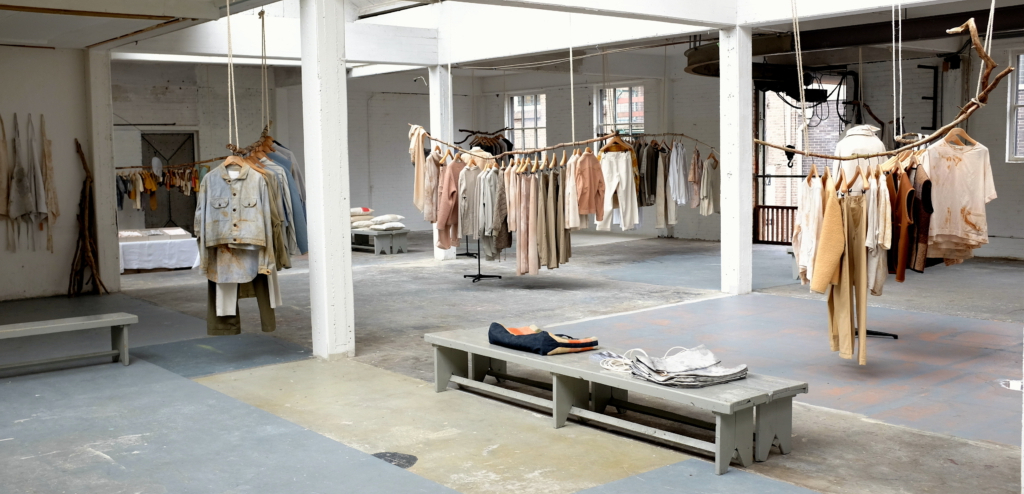From well-known designer within the Dutch fashion scene to social enterprise that goes by the name Hul le Kes; together with Sebastiaan Kramer, Sjaak Hullekes set course to change the fashion industry on an environmental level as well as a humanitarian level. For June Fashion Month Arnhem, the Dutch brand will showcase not one but four collaborations, using sustainability and circular fashion as a red thread for all of them. Ahead of the exhibition that will kick off on the 2nd of June, we explore the principles of Hul le Kes and highlight its unique path within the fashion industry.
In 2018, Sjaak Hullekes said goodbye to his namesake brand, and surprised the Dutch fashion scene with an alternative that focused on recycling and the heritage of pre-loved clothing items. Hul le Kes spend the last years making name and introducing itself to the fashion industry by bringing together what appears to be rubbish and making something beautiful out of it. From the brand’s runway show during AFW Studio 2019 up until now, the main focal point of Hul le Kes has been the beauty of imperfections. It appears that its focus lately however has been embracing bigger goals. Dipping their toes into both humanitarian and environmental purposes, Sjaak Hullekes and Sebastiaan Kramer have set up a Recovery Studio for people to recover from the high demands of our society. As an extension of the Recovery Studio, the brand built an additional workspace ‘Studio 3’, which focusses on people that for various reasons can’t participate in a regular work rhythm.
Hul le Kes calls itself a social enterprise, working with people that share the same mission to slow down the industry and focus on circular fashion. Collaborations are therefore one of the evident ways to expand their pool and their positive impact. A future manifestation of this is upcoming exhibition Hul le Kes X.., a showcase of four collaborations in the form of installations, all built in their store in Arnhem. For the first installation, Hul le Kes repurposed items from the rental collection of the Amsterdam children’s clothing brand Gray Label. The second collaboration is entirely made out of bed textiles from Yumeko, transforming old samples, returns and unsaleable products into new garments. Additionally, together with Limo Hair, Hul le Kes went in search of new techniques and materials from waste streams in order to upcycle even more products. The result of this research that took place in recent months will also be on display. Lastly, together with Fibershed Netherlands, Wilder Land and Roua Atelier, Hul le Kes developed ‘Kruid-tot-Kleur’, a project in which they look for native plant species to dye textiles on an industrial scale. The results of this research will be discussed in a panel talk on the 6th of July.
